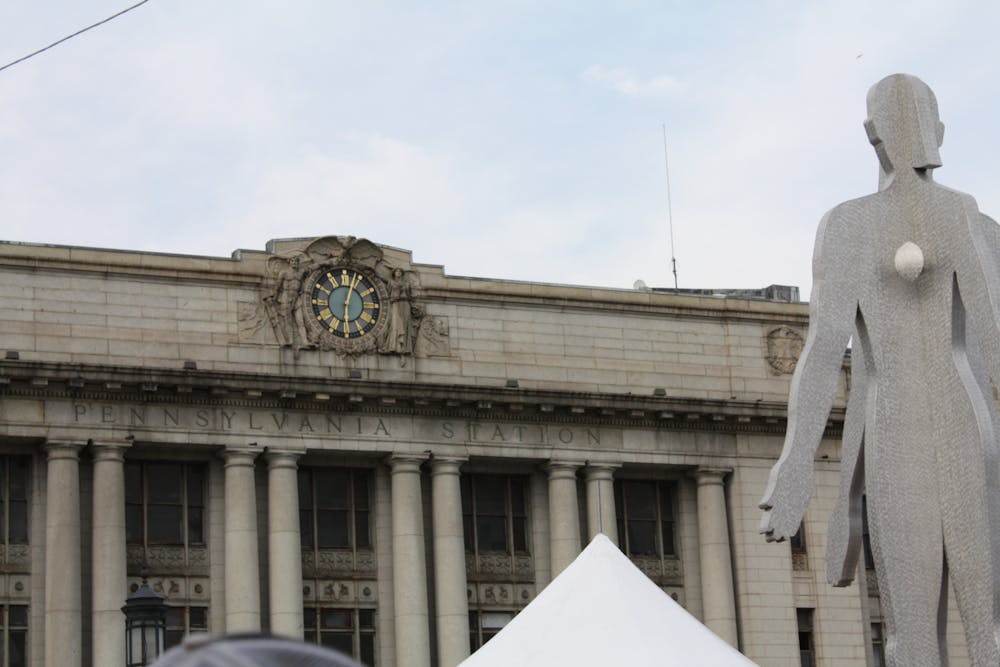While the 2021 Infrastructure Investment and Jobs Act looks to improve infrastructure in the U.S., the U.S. currently receives a C- grade on this matter from the American Society of Civil Engineers and is often ranked poorly compared to other nations.The fact that this rings especially true for transit does not come as a surprise when one looks back at how public transportation has long suffered disinvestment in U.S. history.
In the 1940s and ’50s, control of transit transitioning to municipalities led to a high-cost, low-revenue system dependent on the fluctuations of federal, state and city funding. Additionally, as a result of public acceptance of the automobile industry and the federal investment in highways in the 1950s, cities were constructed around the movement of cars rather than public transit routes. Both the issues of funding as well as the layout of cities play key roles in examining this project.
While historically Americans have disinvested in public transportation, the existing transit systems perpetuated segregation. The place stratification perspective is one increasingly utilized by scholars which positions transit as a “good that disproportionately benefits certain communities over others.” This can occur as a result of transportation systems being intentionally developed by planners, developers and government agencies to better service white and affluent communities or to encourage gentrification.
Whatever the mechanism, the result is inequity in the distribution and design of public transit which deepens the inequity in access to substantive citizenship, the lived, day-to-day rights people exercise like the right to food or water.
Unfortunately, one need not look further than Baltimore to see this in action. The Red Line had the potential to counteract some of the disproportionate benefits received by white and affluent communities as a result of transportation design. However, the Red Line was rejected, while the Purple Line, which serves some of Maryland’s richest counties, was not. It is these types of intentional decisions that have contributed to the inequity in access to substantive citizenship seen today.
Some American cities are beginning to combat these issues. With the recent passing of her proposal, Mayor Michelle Wu of Boston secured $8 million of funding for a project that makes three bus routes — 23, 28 and 29 — fare free. The $8 million comes from the $558 million that Boston received from the American Rescue Plan Act of 2021 and will sustain the project for two years, after which funding reverts to the state.The recently implemented project of fare-free transit will focus on some of the most congested routes serving low-income minority communities.
While this project currently only impacts three routes, it is no secret that Wu desires to make fare-free transit a reality for all of Boston, something she even cements in the language of equal urban citizenship. The project’s goal of increasing access to public transit can help address and reduce many existing inequities. Examining this project allows us to make recommendations for how Boston should continue this project and how other cities such as Baltimore ought to act similarly.
By making public transit fare free, the ability of the wealthy to purchase preferential treatment is erased and the increased burden for low-income riders who rely on daily passes, which are more costly in the long run, is relieved. Furthermore, low-income riders who tend to pay in cash or purchase physical tickets are hindered by transit lines switching to cashless payment methods. In bypassing cost, this issue is rendered irrelevant.
Beyond direct benefits, focusing on increasing access to public transit also highlights how equity in distributing other substantive rights will increase. Healthcare, social services, job opportunities and food will become more accessible for those serviced by these routes. With the elimination of fares, individuals will have more money to spend and can access these services more easily. Additionally, travel times and delays are expected to be reduced.
These benefits are further supported by the project’s plan to work in conjunction with community and transportation activism groups to ensure that they can collect granular data and remain focused on the path that they have set upon.
However, the project only addresses one aspect of equitable substantive rights, accessibility, and falls short in rectifying many of the design factors that lie closer to the root of unequal American citizenship. For example, it does not address issues surrounding the unequal preexisting distribution of supermarkets. While this project does have major benefits to the equity of distributing substantive citizenship, unfortunately several important aspects of citizenship are ignored, many of which need to be addressed as this and other similar projects move forward.
One main concern for fare-free transit, especially its current employment in Boston, is the possibility of driving gentrification. Greater accessibility to communities may spur neighborhoods to supplant their traditional residents with younger, middle-class residents who can dictate the transportation that best serves them. This, in turn, enhances the inequity of citizenship in these already marginalized areas. By increasing accessibility on only these three routes which service low-income minority communities, the current potential for gentrification is high.
Another related concern is the growth machine and how mass transit often favors private establishments and promotes racially contrasted development. In other words, low-income minorities often lose out as spaces are repurposed and redesigned.
One of the projects stated potential economic benefits is to incentivize owners and developers to relocate to areas of greater traffic. This is precisely the repurposing that plays into the growth machine, which further exacerbates the unequal distribution of goods and services. The project also aims to allow businesses to grow their customer base as a result of increased accessibility and decreased costs of the surrounding area. However, the key questions here are “who comprises that customer base?” and “how will the influx of customers shape the distribution of goods and services and, in turn, the equality of citizenship in the areas that they arrive in?”
The final concern is whether increased accessibility to employment will impact differences in socioeconomic substantive citizenship. Concerning access to job opportunities, recent findings suggest that equalizing accessibility does not equate to equalizing socioeconomic outcomes. This suggests that systems of public transportation are designed in a way that white communities are provided access to jobs that create positive socioeconomic outcomes, meanwhile, the transit that connects minority communities to jobs does not achieve this.
This finding is key, as it ultimately negates one of the significant expected benefits of fare-free transit. Ultimately, it seems the pursuit of equal urban citizenship in relation to public transit will have to extend beyond the issue of equal access and must investigate the structural layout of transit systems.
While I have presented both critiques of the project, it is vital to note that many are not current issues but ones that must be considered as the Boston project progresses and similar projects are implemented elsewhere. If these concerns are addressed and remedied, the project could serve as a significant first step in addressing and reducing many existing inequities in contemporary citizenship and may lead to a closer examination of how the underlying layout of cities may perpetuate inequity.
Julian Madrigal is a transfer sophomore from Los Angeles studying Psychology. He is an undergraduate research assistant in the Students for a Positive Academic Partnership with the East Baltimore Community research lab.





